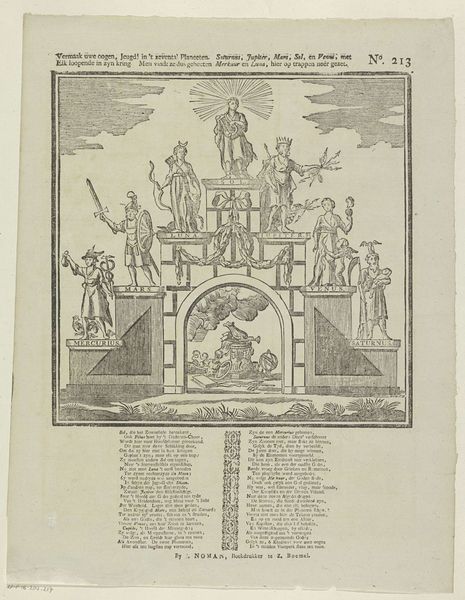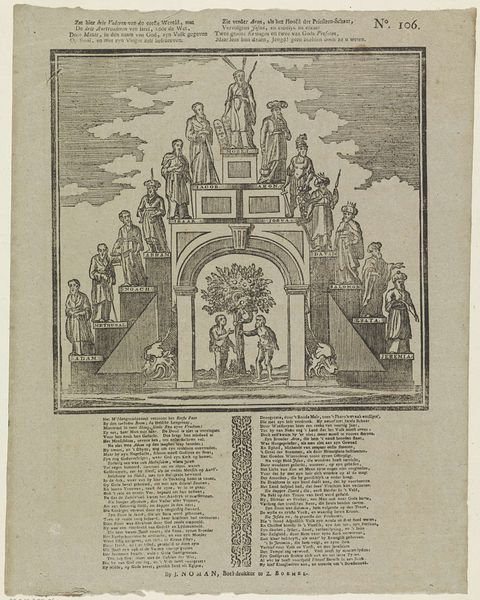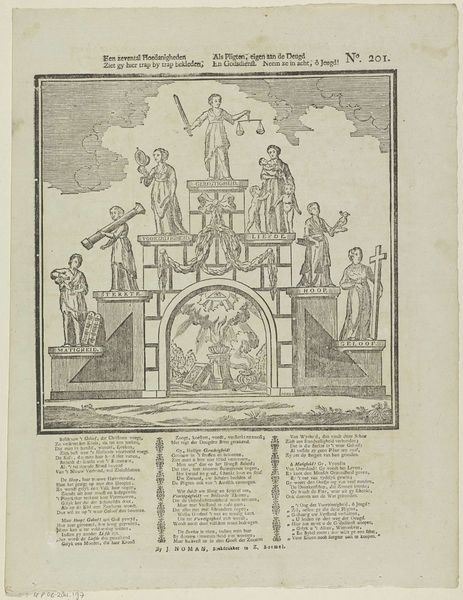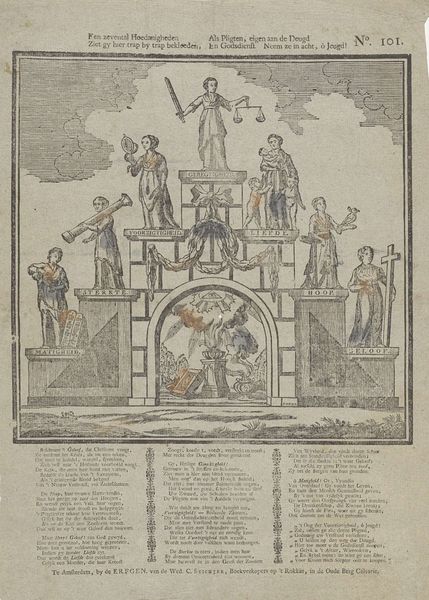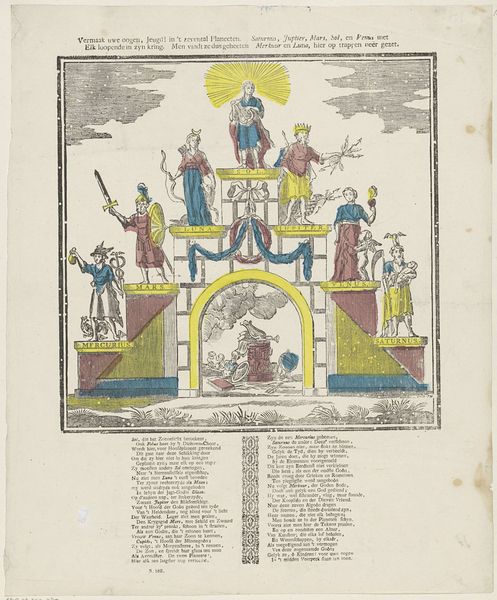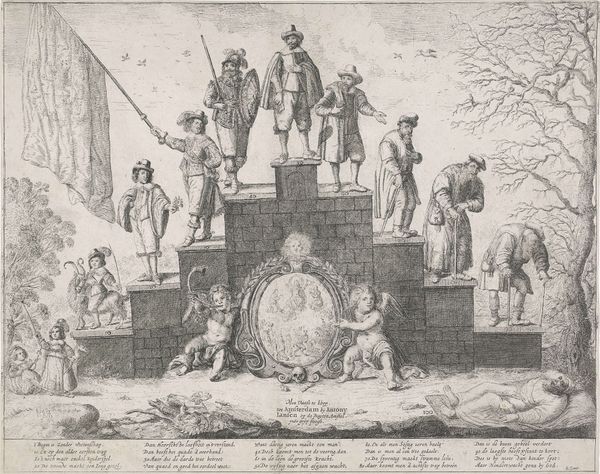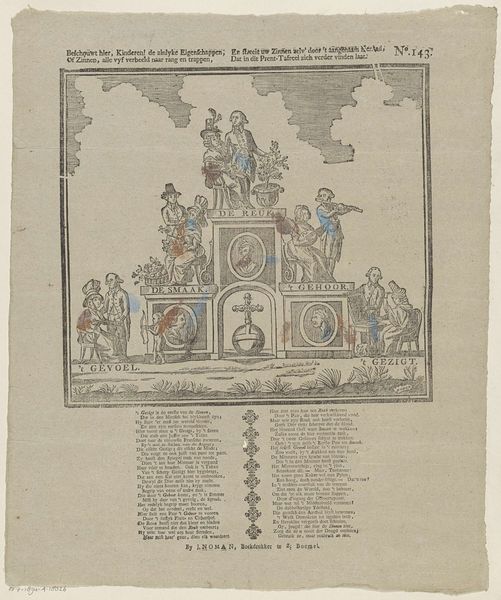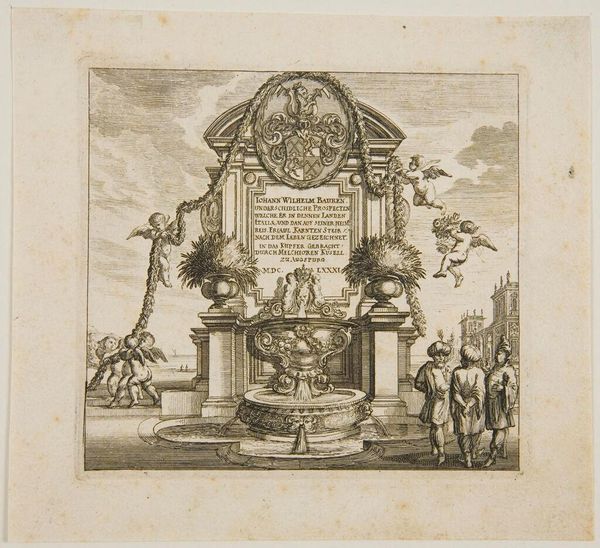
Vermaak uwe oogen, jeugd! in 't zevental planeeten. / Elk loopende in zyn kring / Men vindt ze dus geheeten / Saturnus, Jupiter, Mars, Sol en Venus, met / Merkuur en Luna, hier op trappen neèr gezet 1715 - 1813
0:00
0:00
Dimensions: height 410 mm, width 307 mm
Copyright: Rijks Museum: Open Domain
Curator: This engraving, titled "Vermaak uwe oogen, jeugd! in 't zevental planeeten," probably produced sometime between 1715 and 1813, presents a fascinating allegorical tableau. What strikes you about this piece at first glance? Editor: Well, it's quite busy! There are a lot of figures, seemingly representing planets, all arranged on this sort of stage. And is that Dutch text below? It gives the piece a somewhat theatrical feel, like a scene from a play. How do you interpret this staging of planetary figures? Curator: The theatricality you notice is key. Prints like this served a public function. Consider the era. This engraving aimed to educate and entertain, offering a baroque vision of the cosmos aligned with prevailing cultural understandings. The staged arrangement emphasizes a hierarchical worldview, reflective of societal structures of the time. Note the placement of 'Sol', the sun, at the top. Editor: Ah, I see. So, it’s not just a scientific diagram, it’s also making a statement about the world order? Were prints like this common at the time, used to disseminate knowledge and reinforce certain beliefs? Curator: Precisely. Printmaking offered relatively inexpensive methods for distributing imagery and ideas, impacting popular culture, belief systems, and even scientific understanding. Also, the choice to represent the planets as mythological figures is significant, drawing on classical symbolism to lend authority and familiarity. What might that say about the artist's assumptions regarding the intended audience? Editor: I suppose it assumes some level of classical education or at least familiarity with those figures, pointing to a particular class or educated segment of the population as the intended consumers. It's interesting how intertwined knowledge, art, and social standing seem to be. Curator: Exactly! We see how deeply ingrained art is within cultural and socio-political narratives. Examining pieces like this challenges us to unpack the subtle yet powerful ways that imagery shaped public perception. Editor: That's really helpful. I'll definitely think differently about the role of prints in society from now on. Thank you.
Comments
No comments
Be the first to comment and join the conversation on the ultimate creative platform.
